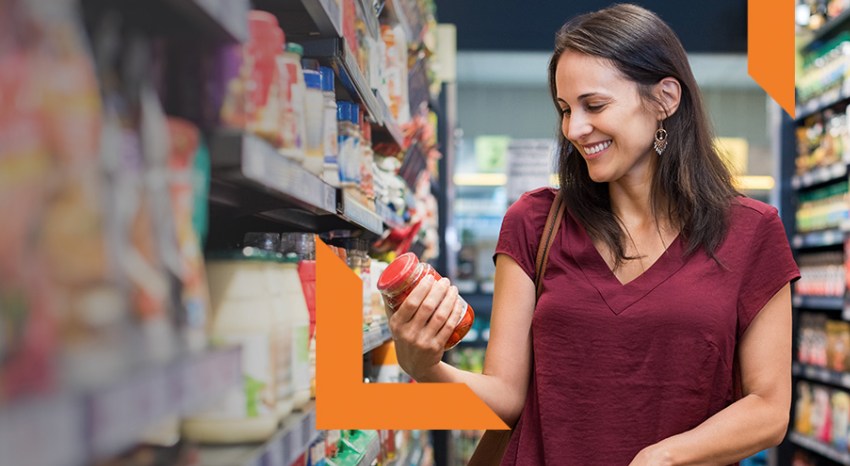

To differentiate themselves from the competition and win back their market share, grocers need to do two things: adopt and adapt.
Consumer behavior is being increasingly driven by convenience and value.
Customers are feeling the financial pinch of inflation, higher interest rates, and general economic uncertainty. As a result, we see a drive to value through both cross-shopping numbers and the increasing market share of larger retailers (offering lower prices).
At the same time, the stabilization of the eGrocery market at a significantly higher rate than pre-pandemic suggests that customers have grown accustomed to the convenience that comes from shopping online.
This should prompt grocers to adopt value and convenience into their core service offering. However, the grocer’s traditional high-touch, high-level in-store service shouldn’t be abandoned. Instead, it should be adapted to become part of the digital experience.
The best, most cost-effective, efficient way of adopting and adapting is by utilizing technology to provide contextualized commerce to consumers. That means enabling a holistic digital experience based on what matters to each individual shopper and timing these experiences to their specific shopping cycles.
This level of predictive personalization is relevant, seamless, and connected to both online and in-store commerce. Adopting the most important consumer drivers and adapting the traditional service strength of grocers so that it fits the digital experience.
The result — a blend of technology and tradition — is an overall service offering that larger retailers simply can’t match.
Previous Page
This study was conducted in Fall 2023 as the fourth annual installment of a grocery ecommerce study that Ipsos has conducted since 2020. This study was designed to differentiate between three different fulfillment methods of obtaining grocery orders: In-Store Pick-up, Curbside Pickup and Delivery.
The approach was 2-pronged:
- Step 1: Ipsos conducted a 7-minute survey of 1,200 Americans to understand which elements of grocery pick-up and delivery are most important to consumers. The survey was conducted October 25, 2023. A Key Drivers Analysis was conducted to identify the top drivers of “Likelihood to Use Brand Again for grocery ecommerce” using Ipsos’ proprietary Ipsos Bayes Net (IBN) modelling technique.
- Step 2: Ipsos then deployed their panel of trained mystery shoppers to measure brand performance across a specific set of elements related to grocery pick-up and delivery. Roughly 33 mystery shops per method (In-store Pick-up, Curbside Pick-up, Home Delivery) were conducted for each qualifying retailer. Retailers were only shopped for methods they offered, so in some cases sample was redistributed appropriately across offered methods. Geographic representation was ensured across 4 regions (West, Midwest, Northeast, South). Mystery shops were fielded between October 23 – November 17, 2023. The relative importance of each service element ascertained from Step 1 was applied as a weighting factor to the Mystery Shopping results.
For a full copy of the results or to participate in Ipsos’ next ecommerce study (coming Fall 2024), contact Silvana Daehn at silvana.daehn@ipsos.com.
Back to Top
At Ipsos Channel Performance, we partner with our clients to understand their shoppers and how they shop. We measure the execution of brand promises. We drive compliance and sales conversion. We improve performance across all sales and service channels – physical, contact center, and digital – and help deliver profitable growth. Learn more.
Next Page
Contact: Silvana Daehn
Email: silvana.daehn@ipsos.com.





